The effect of colors on children
Colors affect the bodily functions, mind and emotions with the energy produced by light. Studies conducted clearly demonstrate the benefits of colors where the development of the brain, creativity, productivity and learning are concerned. The effects of color on human beings can be varied; causing excitement, lending calm, giving inspiration, raising anxiety or tension or giving peace are some of these effects. These effects can be observed more distinctly in children. Children can be more sensitive to colors.
For this reason it is quite important to choose colors appropriate for children. Using an intense red color in the room, of an anxious child, or dressing them in red clothes or giving them a red rucksack could make him/her even more restless and tense. The same holds true for very active children as well.

When the energetic color red is used on or around a very active child, the combination could lead to a child who is excessively active all day long. This could also affect their educational success negatively. It would be more appropriate to use blue, green and purple in the belongings of energetic and restless children.
It is also necessary to be especially sensitive in designing children’s rooms. Naturally each and every room in our homes is important, however, a child’s room must be attractive and entertaining, with elements that will contribute to his education and the development of his brain. In choosing the wall color for their rooms, we must endeavor to protect children’s sight, provide them with a proper study environment, protect their physical and mental health and create an environment conducive to a comfortable sleep.
Bedrooms can be of ordinary importance for parents. However, for a child, it is a place he/she sleeps in, plays by himself and spends time with his/her friends. The younger the age of a child the simpler his/her room must be. The rooms of a baby and a 4 year old child must not be the same if possible.
How Colors Affect Children?
In addition to affecting our mood, emotions and actions, color also affects the ambiance of a space as well as how big or small, coldly or warmly it is perceived. Colors are the most commonly used tool by children to express their emotions and thoughts. Although the preferences of children show a general commonality based on age group, their color choices can differ based on their moods, the way they express themselves and their feelings.
Children need to be educated in areas that bolster their creativity and imagination. Due to the fact that classrooms are the most important means of serving this purpose they rank foremost among the factors that require our attention the most.

The links in the brain are not completed in a child until 5 to 6 years of age and they take 1 more year to mature. Due to not being able to read and write at this age they rely more on visual material to establish communication. Thus color is an important tool of expression for them.
Sight starts developing after the 6th month in babies and development continues until the age of 10. Sight is one of the most important senses that connects us to the world. Light and color have a mesmerizing effect on us. On average, the human eye can perceive 150 different colors in visible light. This means a person with normal sight can differentiate between millions of different colors. Color is one of the most important characteristics that can help us assess, estimate and define an object. Each and every person has certain reactions stored in their perceptions and as such the perception of each color addresses the related emotion.
As with all human beings children are also “psychological and physiological” intellectual beings. Children use their senses to facilitate communication with their environment. They use their sense of sight together with light and colors as well as other visual environmental factors, to communicate. According to research studies, color carries critical importance in the development of the cognitive and motor skills of the children.
Color is one of the strongest and most important components of interior design. Color could affect the psychological reactions as well as the physiologic health of children. Especially in children in the 6-7 age group, who have already started school but are not yet able to employ their reading and writing skills fully in communicating, color proves to be a very significant source of outside information. Studies conducted in recent years have revealed to us that color is not used solely to create nice and elegant environments.
Color is an important component of designing the educational spaces of children. Children display their full potential and learn in spaces where they are provided the means and opportunity to learn. Research studies demonstrate the important role played by environmental factors in developing levels of success and productivity, reducing the error rate and inducing positive behavior.
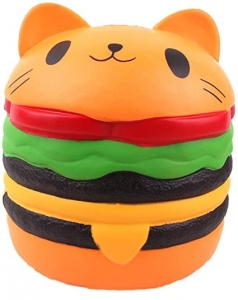
How Do Colors Affect Children’s Brain as Well as the Children Themselves?
Depending on the situation they are used in, colors can give rise to positive or negative effects. Each color used by itself in a room with the expectation of creating a positive effect, carries the possibility of causing a negative reaction instead. Being subject to excessive stimuli can cause changes in breathing pattern, pulse, blood pressure and muscle tension. On the other hand, too little stimuli can lead to anxiousness, sleeplessness, excessive emotional reaction, loss of concentration and nervousness.
To give an example, a completely white environment leads to lack of stimulus and this, contrary to expectations, does not cause a balanced or neutral effect.
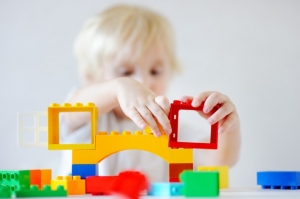
Scientific studies demonstrate that colors affect not only the outer layer of the brain but the entire central nervous system as well. According to EEG and pulse measuring systems, men and women react differently to colors. It has been observed that the pulse of a hyperactive child calms down in a room painted in either blue or pink.
When color is transmitted from the eye to the brain, the brain releases a hormone affecting the emotions, mind clarity and energy levels. The negative and positive psychological effects of colors can be observed in human beings based on the combinations they are used in. While babies feel unsettled in a room of mainly yellow, they can feel peaceful and calm in a room painted in a combination of blue, green and yellow.

RED
Red is the most dominant color among all colors. It is a strong stimulus. In scientific studies, red has been observed to have a more stimulating effect on visual activity and autonomic nervous system functions in comparison to blue.
Red attracts all the attention and distorts the effect of other colors. The lens of the eye must adjust to be able to focus on red. The natural focal point is behind the retina. The dynamism of red is reduced as it turns into pink with the addition of white and gains softer and calmer undertones. For this reason, the use of red on the walls of children’s rooms must be avoided. Due to its strong and warm effect red could be used as an accent in children’s rooms fashioned in beige, blue and brown. Using intense red in the room of your child who uses it to study, play with his/her friends and sleep in, could have a negative effect on your child. Children could feel themselves tense and aggressive in rooms painted in intense red.
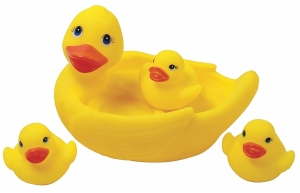
YELLOW
Yellow is the most joyful color on the color scale. It represents wisdom and kindness. It radiates warmth, joy, enthusiasm, fun and inspiration. Its effect is not as severe as red’s. Yellow is relatively a lighter color and as such it has a refreshing effect.
Symbolically yellow represents mental and spiritual enlightenment daylight and communication. Due to the fact that it also affects memory, motivation and attention it is suitable for use in children’s rooms. However, its intense use may cause tenseness and anger. Studies conducted reveal that intense use of yellow could cause babies to cry more.
Calmer and more peaceful environments for children could be created by using yellow in combination with blue and green in babies’ rooms.

BLUE
Blue, in all respects is the total opposite of red. While blue is transparent and wet in appearance red is opaque and dry. Psychologically the cold and comforting nature of blue is the polar opposite of the warmth and excitement of red. In contrast to red, blue reduces body temperature, blood pressure and pulse rate. Blue evokes feelings of contentment, spaciousness and comfort due to being the color of the sky and ocean as well. As the shade of blue approaches black with the addition of black it may become depressive and melancholic. Blue is a color that is widely recommended for use in children’s rooms. Especially in nurseries, the use of blue helps the baby’s easy and peaceful transition into sleep. It can also be comfortably used with active and vibrant children due to its calming effect. As is the case with all other colors, you can accessorize your room in red and yellow when you choose to paint your walls in blue.

GREEN
Green, psychologically represents health, and it has a calming effect on the nervous system. Green is reminiscent of peace, calm and quiet. Due to the fact that the lens of the eye focuses on green on the retina, green is the most relaxing color.
The yellow in green lends an elegant character to this color while the blue renders it warm. Light green reduces pressure. Symbolically green represents the power of nature and life and as such it is considered to be the most natural, relaxing, calming and balanced color. Red signals “stop” there is danger, while green signals “safe crossing” and thus reduces the tension in the body. Green can be used with ease in nurseries, and in children’s and teenagers’ rooms. The use of color green in nurseries will ensure a peaceful and comfortable transition into sleep for the baby. When green is used with more undertones of yellow, it clarifies the mind, and therefore can be used in teenagers’ rooms to foster success in school. The serenity of blue and the mental clarity achieved with yellow will have a good impact on them.
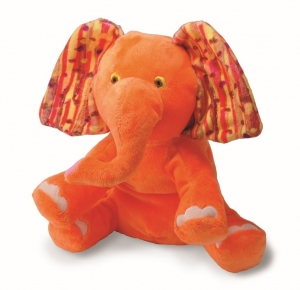
ORANGE
Orange is softer and simpler in comparison to red. It represents happiness, sociability, an extrovert nature as well as joy with the excitement of red and the energy of yellow. It is ideal in overcoming tiredness. It radiates warmth, increases appetite and helps you wake up early in the mornings. Its energy can be lower when saturation is low. It is ideal for use in the rooms of introverted children with problems in socializing. Orange physically represents self-confidence, independence and to a certain extent competition. If there is a separate recreation room in your house and your child spends time there with his/her friends you can easily use shades of orange in this room.
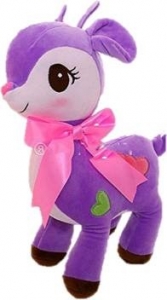
PURPLE
Purple is a mixture of red and blue that are physically and psychologically opposites of each other. Its different shades are reminiscent of fragility, elegance and wealth; however, sometimes some shades could prove to be disturbing.
Purple stimulates the part of the brain related to creativity. At the same time it has a calming effect. Violet is a lighter shade of purple and is included in the spectrum. Purple on the other hand is a complex color and in terms of color type there are big differences between them. Girls like pink and purple very much. Purple is a color appropriate for children. Purple can be easily used in the rooms of preschool children that are usually involved in creative activities as well as teenage girls’ rooms for purposes of contributing to their academic skills. Due to the fact that it also contributes to physical and spiritual serenity, purple and its different shades can be used in the rooms of hyperactive and highly animated children.
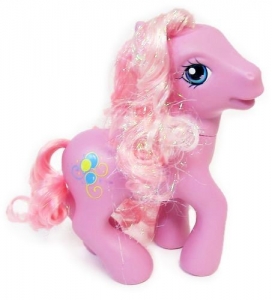
Pink
Pink, which is a mixture of red and white, physically affects us in a positive way. It is relaxing and warm. It is the only lighter shade of red with its own name. Other lighter colors are just light green or light blue. Pink is also psychologically a strong color. It represents the continuity of living beings as well as femininity. It has a deeply soothing effect. Too much pink could be tiring and oppressive. It is not suitable to use too much pink in the rooms of shy and introverted children as this is not an energetic color. It can lead to further withdrawal of this type of children. Pink with lesser undertones of red can be easily used in the rooms of active and energetic children. It evokes feelings of warmth and peace.

BROWN
Brown consists of red, yellow and black. It is almost as serious as black; however, it could be said to be softer and warmer. It has this qualities thanks to the red and yellow in its content. It is a color associated with nature and the universe. It is intense, reliable, warm and positive.
In contrast to black, it is considered reliable and supportive by many people. It can be specifically used in teenagers’ rooms. Due to the fact that it is a down-to-earth color influenced by the energy of red and yellow and the seriousness of black, it could prove helpful in developing feelings of responsibility and protection in teenagers. It is a color associated with will and possession. Brown as a color has positive influence on the family and friendships of teenagers. At the same time it gives peace and serenity. It calms teenager’s high spirits and helps them to remain down to earth in the academic field. To achieve success in education simultaneously with relaxation you can choose to color a part of your teenager’s room in a shade that is yellow intense. Moreover, silky beige and straw colors can be used together in nurseries. This color gives rise to feelings of confidence and is relaxing.
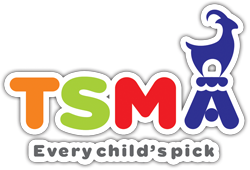

دیدگاه خود را ثبت کنید
تمایل دارید در گفتگوها شرکت کنید؟در گفتگو ها شرکت کنید.